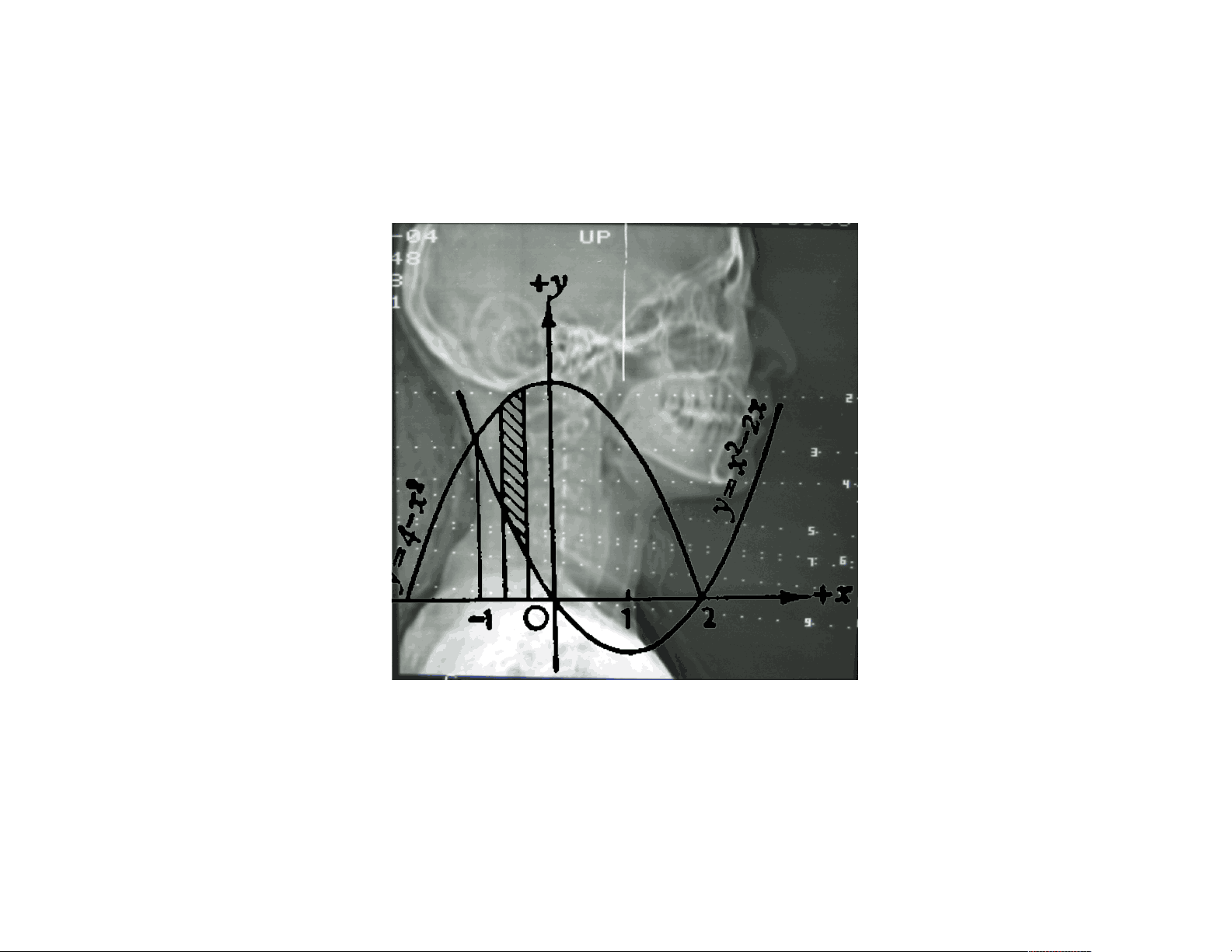
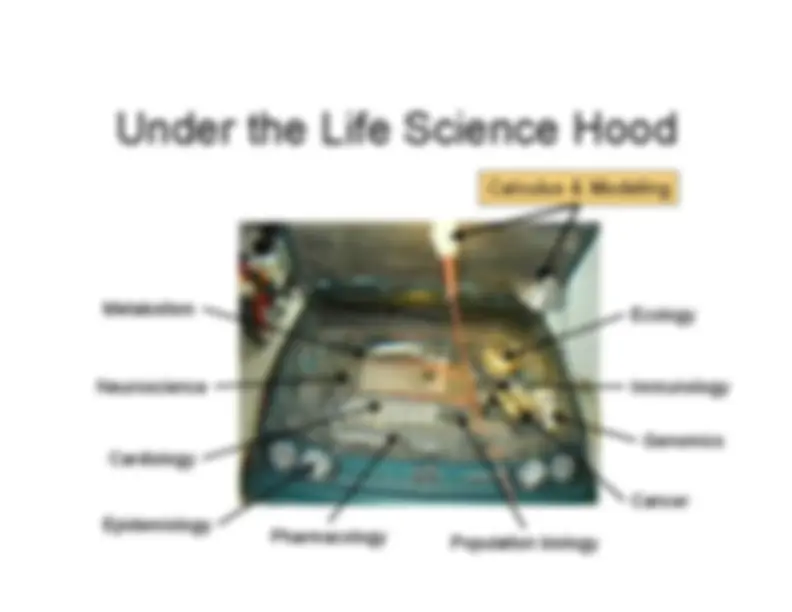

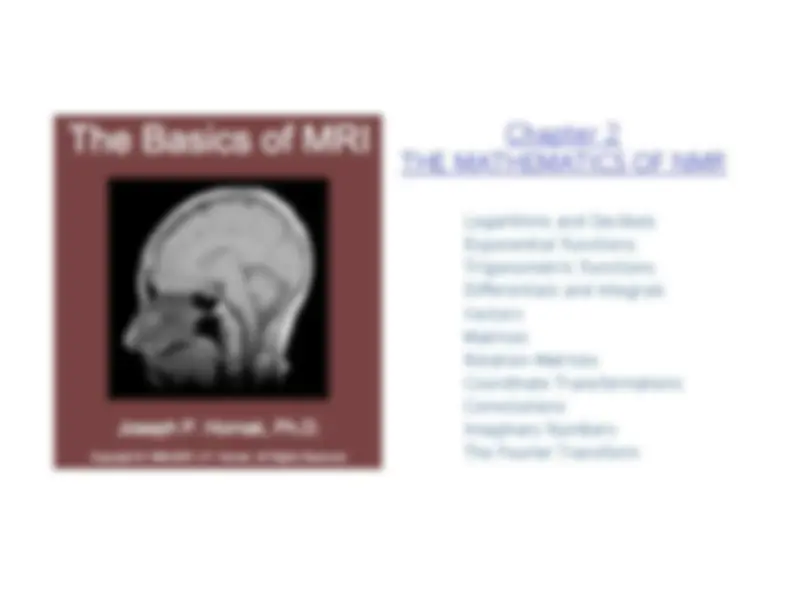
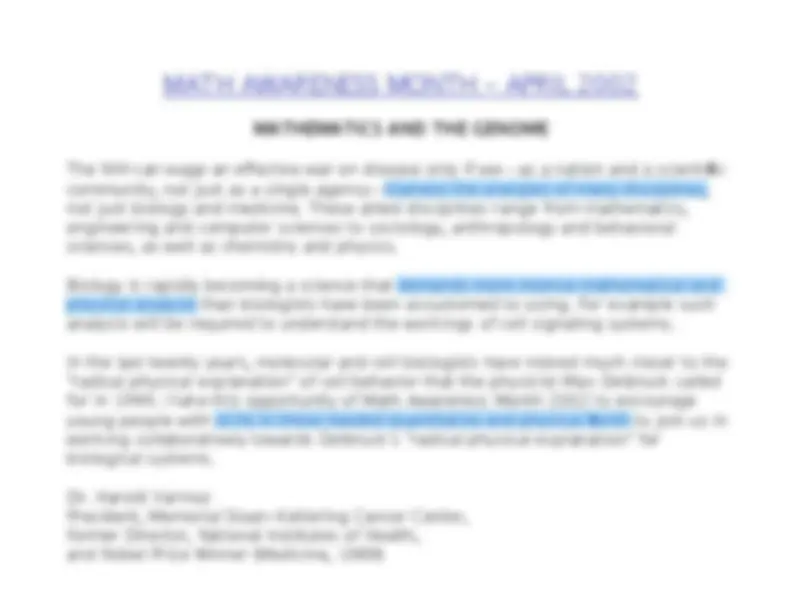
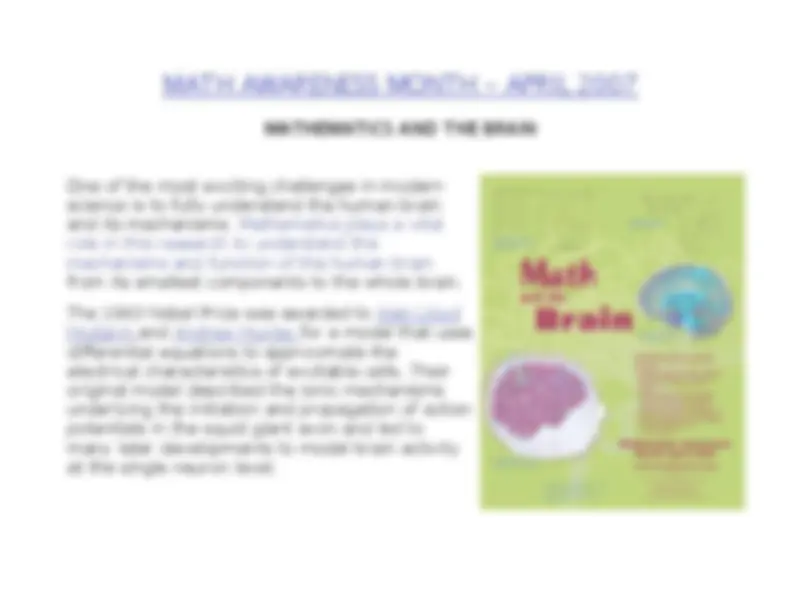
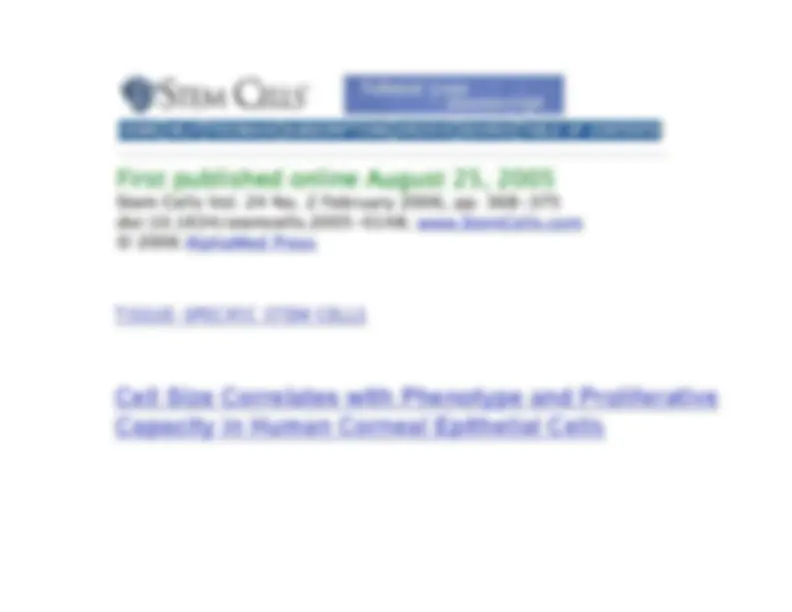


Study with the several resources on Docsity

Earn points by helping other students or get them with a premium plan


Prepare for your exams
Study with the several resources on Docsity

Earn points to download
Earn points by helping other students or get them with a premium plan
Community
Ask the community for help and clear up your study doubts
Discover the best universities in your country according to Docsity users
Free resources
Download our free guides on studying techniques, anxiety management strategies, and thesis advice from Docsity tutors
Material Type: Notes; Professor: Heyer; Class: Calculus I; Subject: Mathematics; University: Davidson College; Term: Unknown 1994;
Typology: Study notes
1 / 12

This page cannot be seen from the preview
Don't miss anything!







Chapter 2 THE MATHEMATICS OF NMR Logarithms and Decibels Exponential Functions Trigonometric Functions Differentials and Integrals Vectors Matrices Rotation Matrices Coordinate Transformations Convolutions Imaginary Numbers The Fourier Transform
MATH AWARENESS MONTH - APRIL 1999
During the course of a typical human life, the heart beats about 2 billion times. Yet, in spite of the obvious reliability of the heart, nearly half of the deaths in the United States are due to the failure of the heart to beat properly. Mathematics is at the "heart" of trying to understand how the heart beats and why it fails to beat properly. To follow what individual cells do requires tracking how ions move and how voltages change. To determine how cells communicate to each other requires a description of currents between cells. To follow how a signal propagates requires a description of the geometry of the medium, the orientation of fibers, the thickness of walls, etc. And all of these descriptions use the language of mathematics…
MATH AWARENESS MONTH - APRIL 2002
The NIH can wage an effective war on disease only if we--as a nation and a scientific community, not just as a single agency--harness the energies of many disciplines, not just biology and medicine. These allied disciplines range from mathematics, engineering and computer sciences to sociology, anthropology and behavioral sciences, as well as chemistry and physics. Biology is rapidly becoming a science that demands more intense mathematical and physical analysis than biologists have been accustomed to using. For example such analysis will be required to understand the workings of cell signaling systems. In the last twenty years, molecular and cell biologists have moved much closer to the "radical physical explanation" of cell behavior that the physicist Max Delbruck called for in 1949. I take this opportunity of Math Awareness Month 2002 to encourage young people with skills in these needed quantitative and physical fields to join us in working collaboratively towards Delbruck's "radical physical explanation" for biological systems. Dr. Harold Varmus President, Memorial Sloan-Kettering Cancer Center, former Director, National Institutes of Health, and Nobel Prize Winner (Medicine, 1989)
Cell Size Correlates with Phenotype and Proliferative Capacity in Human Corneal Epithelial Cells
http://ls.berkeley.edu/bio/gallery_mcb/wound.html 20 μm (estimated scale bar added)